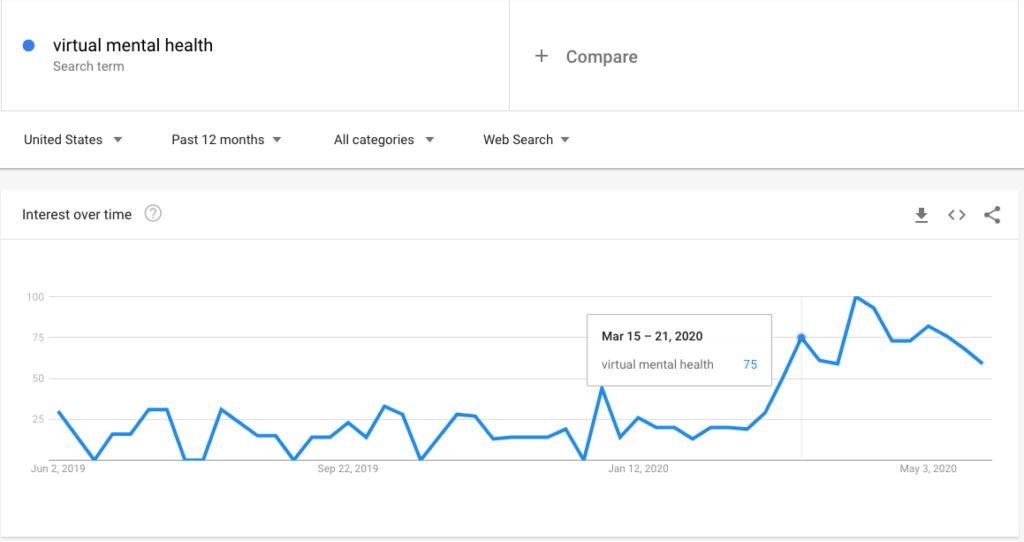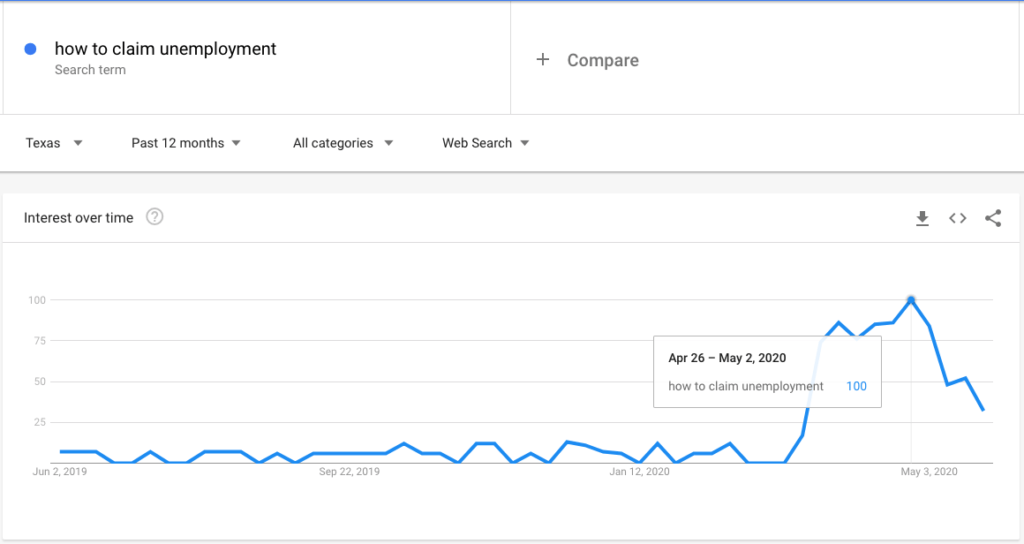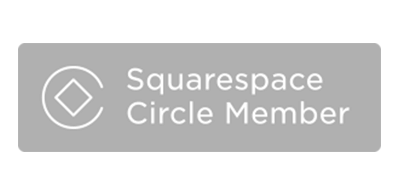

Desktop Versus Mobile: Shifting Dynamics of Device Usage
For years, we’ve seen an increase in the use of mobile devices. Traffic to websites from mobile devices continues to rise every year, and in 2019 Google began transitioning to a “mobile-first” indexing algorithm – essentially ensuring the websites shown in search engine results were responsively designed.
Since stay-at-home and work-from-home orders have been implemented, however, websites are seeing a sudden reversal of this longtime trend. Move and more website traffic is arriving via computers than mobile devices as more employees work from home. As the line between home life and work life blurs, we’re seeing users spend more time on a desktop or laptop and less on mobile devices.
As seen in the chart below, you can see sharp increases in the use of desktop versions of Facebook, YouTube, and Netflix. Many workplace environments have settings to block these types of websites on work computers. With more of us working from home, restrictions are likely looser, making desktop browsing more accessible.
Social Media as a Cause-Based Medium
Social media evolves at the speed of light, reacting faster to changes in the zeitgeist than almost anything else – digital or otherwise. As 2020 unfolds with both a global pandemic and massive social upheaval, users are looking to social media for connection and expression – especially as physical isolation continues in many parts of the country and for individuals with certain complicating factors.
These revised expectations extend to brands, as well. The majority of Americans feel society is more divided today than ever before, along political, racial, gender, and socioeconomic lines. Even so, 91% of people believe in social media’s power to connect people, and 78% of consumers want brands to use social networks to help people connect with each other. Importantly, 72% of consumers expect brands to be positive contributors to society, while 64% want to see brands use their power to help people.
Social media provides the opportunity to truly connect with people in ways other communications mediums don’t – something that has become more apparent during a time of increased physical separation. Channels like Facebook and Twitter provide opportunities for interaction with consumers that simply don’t exist with campaigns using email, print ads, or other types of advertising. But, with the ability to instantly connect comes a heightened level of responsibility to timely, meaningfully, and appropriately react to newsworthy events in order to meet audience expectations of your law firm.
To remain sensitive to the feelings of everyone who can see a law firm’s social media content, be cognizant of post timing, trending hashtags, and sources of articles or content shared. For instance, on June 2 a massive effort was undertaken on social media channels – primarily Instagram – to bring awareness to the Black Lives Matter movement and ending racial discrimination. Brands must be aware of trends happening on social media channels, even if they choose not to participate. Posting something self-promotional on June 2 would have come across as tone deaf; it is often better to post nothing than come across as insensitive or unaware.
Fluctuating Search Trends
Perhaps the biggest shifts we’re seeing are massive fluctuations in search volume for certain keyword phrases related to COVID-19 issues and systemic societal changes. Some areas are seeing huge spikes in traffic, while others are seeing total drop offs.
As we analyze the charts below, please keep in mind these numbers represent search interest relative to the highest point on the chart for the given time. A value of 100 is the peak popularity for the term. A value of 50 means that the term is half as popular.
For instance, in mid-March of 2020, we saw a large spike in searches for “virtual mental health” resources, reaching peak popularity the week of April 5 though 11. This phrase has seen more interest in the past 2.5 months as people are more isolated at home and cut off from many mental health coping mechanisms – whether that be professional therapy, family and friends, or hobbies.
A highly discussed topic in the business and legal industries relates to business interruption insurance and whether or not damages caused by the pandemic are covered. Search volume for this keyword phrase was virtually non-existent before mid-March, at which time we saw a sharp uptick as business closure orders came down from government officials. While the search volume for this keyword has tapered, we’re keeping a close eye on it as insurance companies and business owners have already taken related issues to court, clashing over what is covered and what is not.
As expected, people searching for how to claim unemployment has seen an absolutely massive spike in search volume since the end of March, with late April / early May seeing the height of the trend.
In terms of legal issues, there was a fairly significant drop in search volume for criminal defense lawyers at the beginning of stay-at-home orders. As more people had to stay strictly at home during those first few weeks, fewer people could get into the kind of trouble that requires the assistance of a criminal defense attorney. As you can see, search volume has already started to climb upward again, however.
Partnership disputes saw a spike in early May, around the six-week mark of stay-at-home orders and mandated business closures. With around half of small businesses only having a cash buffer sufficient to stay in business for roughly 27 days (with the other half not even lasting that long) in the event of a total closure, some small businesses were most likely facing difficult decisions about dissolving partnership agreements and/or businesses around the beginning of May.
Interestingly, even with less traffic on the roadways, search volume for car wreck lawyers remained relatively unchanged, and in fact showed an increase over Fall of last year as a whole. This could indicate those involved in car wrecks were more likely to seek out a lawyer perhaps due to other economic circumstances in their lives and/or having more downtime at home with which to research legal options and contact a law firm for representation.
And speaking of driving and cars on the road, we can quite clearly see the increase in UberEats drivers on the roads beginning the week of March 15 as more and more people began ordering food via delivery:
Finally, we clearly saw an increase in people realizing they may need a will or estate plan beginning the week of March 22. This search category in particular has remained elevated since the beginning of the novel coronavirus pandemic:
So What Does It All Mean?
The biggest advice for any company, law firm, or brand in terms of digital marketing in 2020 is simple: stay on your toes, be aware of the conversation, and be ready to adapt as needed. Do your research. Keep an eye on search trends to see what information people are seeking and tailor your content accordingly. Make sure your content is relatable and your voice is consistent and respectful of what is going on in the world. Marketing during uncertain times can tricky to navigate, but it’s not impossible. Uncertainty can often lead to opportunity when capitalized upon correctly.
























Leave a Comment